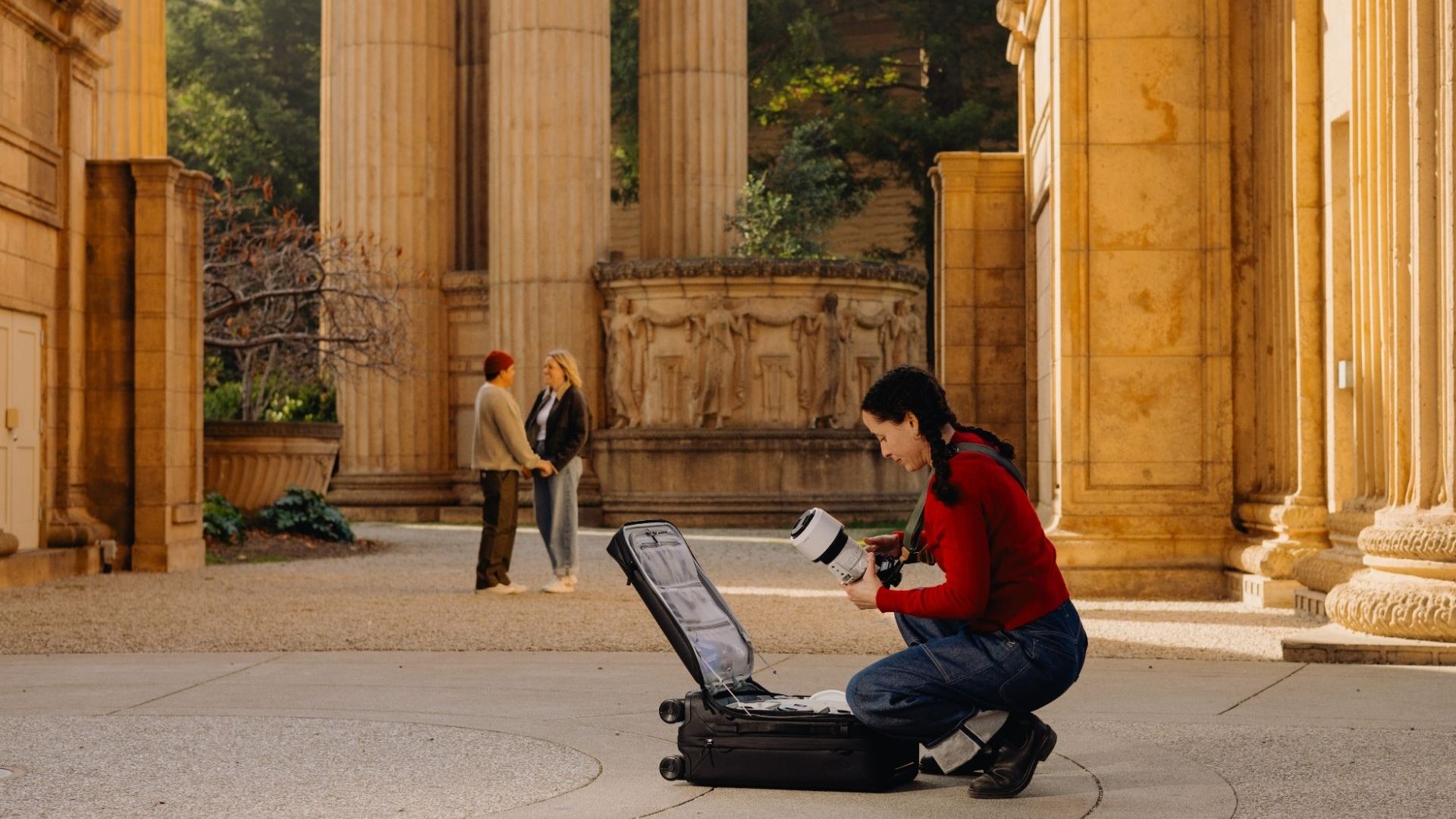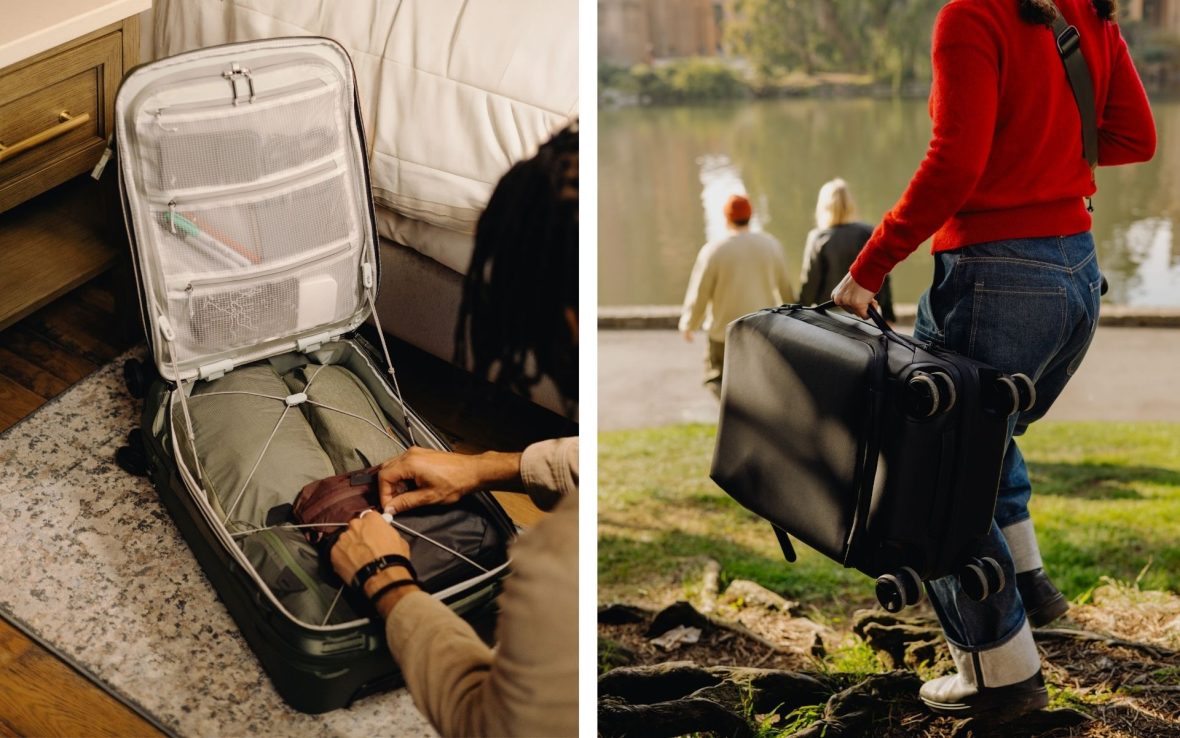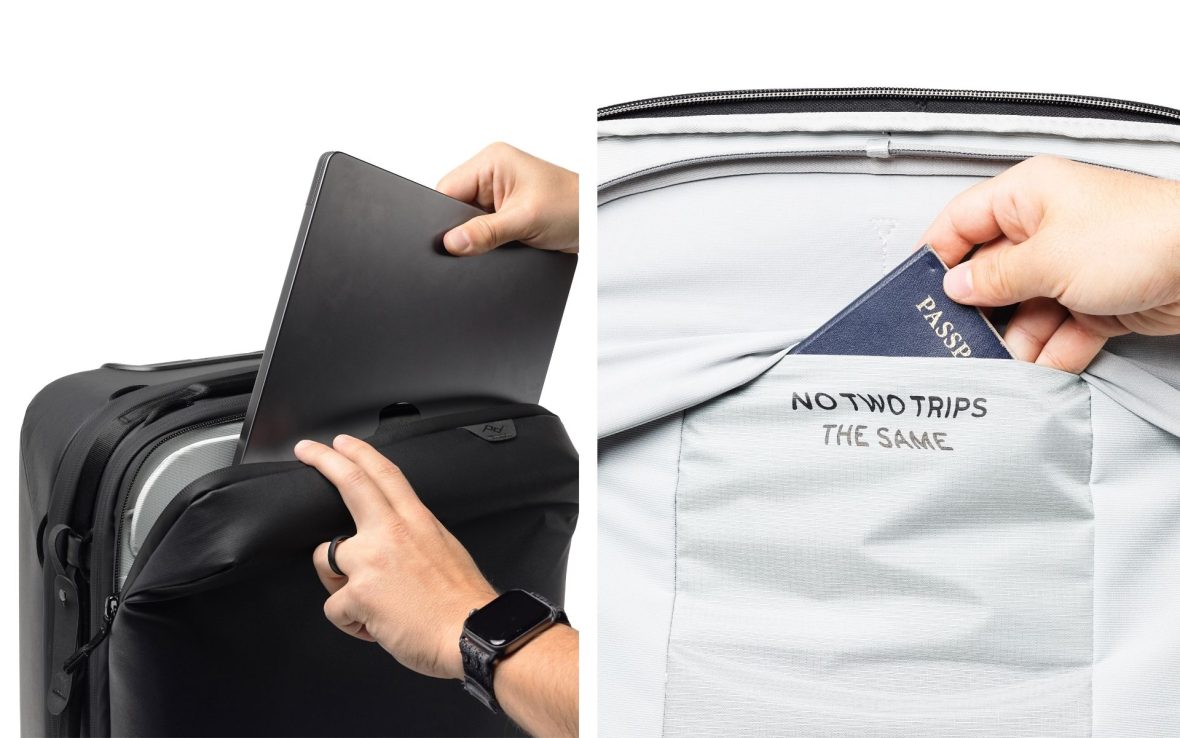
Is Peak Design’s sold-out, made-from-scratch suitcase worth the hype? With half the footprint of a traditional open carry-on and super-smooth wheels, there’s a lot to love.


Is Peak Design’s sold-out, made-from-scratch suitcase worth the hype? With half the footprint of a traditional open carry-on and super-smooth wheels, there’s a lot to love.
For six years, I’ve had a great relationship with a hardsided, clamshell Away carry-on, which I’ve taken on dozens of trips around the world. Having four swiveling wheels instead of two fixed ones changed the way I travel, and we had a great run. But this summer, we broke up.
And all because I tested Peak Design’s elusive, USD$600 Roller Pro Carry-on. A Kickstarter project that’s now sold-out, my packing game has changed once again.
I knew this suitcase was different as soon as I unboxed it. The four 360-degree wheels are so smooth that the suitcase requires only a light touch to push it along a level surface. Even when I rolled it along rough sidewalks in New York City, I didn’t struggle to be nimble enough to dodge other pedestrians.

The first trip we took together was an Amtrak journey from Providence to Manhattan. I didn’t have to battle TSA-style security to get on the train, but I did have to stay in a hotel room that was barely larger than the bed. This is the single best selling point of the Roller Pro: Its footprint is exactly the same whether it’s open or closed.
Unlike a traditional clamshell-style suitcase, which unzips into two halves, this partially soft-sided bag opens from the front, or top if the suitcase is lying flat on the floor with its wheels in the air. The ‘drawbridge’ lid is self-supporting, so it stays open on its own without needing to rest against a wall to prop it up.
Part of what makes this suitcase unique is that Peak Design built it from scratch. Lots of other suitcases have 360-degree wheels, but no other suitcases have these wheels. The brand doesn’t claim to have, erm, reinvented the wheel, but says, “we did reinvent everything else.”
They’re happy to spend the time to literally reinvent the suitcase trolley handle, the bag liner, the lid design, pretty much everything but the shape of the wheel itself, because that’s what their crowdfunding supporters have come to expect from them.
The Roller Pro is made out of 155 components, and Peak Design says only one of them was “off the shelf”: The tension adjuster for the internal system of stretchy cords to keep your stuff in place (think of those little springy plastic things that keep drawstring bags cinched closed, but smaller and svelter).
Having an open footprint half the size of most other suitcases is a game-changer if you’re in a small hotel room, and especially if you’re sharing with someone else. You don’t need a suitcase stand or a few square feet of floorspace to leave your bag open; all you need is a simple chair.
There’s also no need to fumble around with securing your stuff on each side of the suitcase before zipping up, because there’s nothing loose or unsecured that will fall out. The interior of the lid has a sleeve with three translucent zippered compartments, which I used for easy access to socks, underwear, toiletries, and other small items that would have gotten lost without a dedicated compartment.
Packing up to head home was almost… enjoyable?
Part of what makes it so easy is that the suitcase all but eliminates the awkward bulges that are typically made by a telescoping handle. The Roller Pro’s trademarked ‘SlimDrive’ handle is made from flat carbon fiber which has a low, barely-there profile inside the suitcase. There’s no suitcase liner fabric, either; just a molded, felt-covered base.
This is great news for any perfectionist overpacker like me. I usually spend a lot of time playing suitcase Tetris to fill in the valleys made by the handle track, but there’s no need to do that with the Roller Pro, since you can just pack stuff right on top of it without creating dead space.
I’ve found that it’s much easier and faster to pack one deeper main compartment than to pack two shallower halves. The suitcase base unzips to expand for longer trips, or you can compress it for travel on airlines with stricter carry-on rules.
The suitcase’s clever external-access storage compartments are accessed by unzipping an opening in the front of the lid. The compartment folds open to reveal two pockets ideal for AirPods, ear plugs, passports, and other essentials you’ll want within easy reach. I haven’t yet tested the suitcase in a deluge, but it’s worth noting that its exterior is a ‘weatherproof’ fabric made entirely from recycled materials.
This compartment also contains a 16-inch laptop sleeve with magnetic closure, which is designed to keep your laptop and/or tablet from falling out if you were to accidentally pick up the suitcase with the pocket unzipped.
The suitcase has also been designed with the photographer in mind; you can buy additional accessories to safely pack camera gear. The Camera Cube V2 XL, for example (USD$139.95), nests neatly inside the Roller Pro to provide adaptable padding and security for lenses, camera bodies, and other accessories. Removable dividers with flexible velcro tabs allow you to create custom-sized compartments for your gear.
I don’t have many complaints about the suitcase yet. One drawback of having so many features and compartments is that extra zippers also add extra weight, but at 8.6 lbs (3.9 kg), it’s not dissimilar from other suitcases out on the market. Away’s comparable Carry-On Flex, for example, weighs about 7.9 lbs (3.6 kg).

The brand has a cult following among adventure photographers, and is best-known for its clever camera accessories, backpacks, and pouches. Its first product was the Capture Camera Clip, a quick-release clip that fastens to a backpack strap to keep your camera rigid against your chest, rather than swinging around off your shoulder.
I’ve seen so many of these clips out in the wild over the last five years that having one seems to be a prerequisite for calling yourself a travel photographer. It solved a need for better hands-free camera carry that no-one else was addressing, and this is the approach the brand has taken to every product they’ve launched since then.
They’re happy to spend the time to literally reinvent the suitcase trolley handle, the bag liner, the lid design, pretty much everything but the shape of the wheel itself, because that’s what their crowdfunding supporters have come to expect from them.
So far, I have to say it’s been worth it—I’ve never found packing this fun.
***
Peak Design provided a sample for testing but did not review or approve this article. Adventure.com receives no commission or commercial incentive for the publication of this review.
A note on sustainable consumerism: Adventure.com acknowledges that the most sustainable suitcase is the one you already own (and the second-most sustainable suitcase is secondhand). While we don’t endorse buying things for the sake of it, we do try to highlight more sustainable options in our gear reviews so our readers can make more conscious and informed decisions.
****
Adventure.com strives to be a low-emissions travel publication. We are powered by, but editorially independent of, Intrepid Travel, the world’s largest travel B Corp, who help ensure Adventure.com maintains high standards of sustainability in our work and activities. You can visit our sustainability page or read our Contributor Impact Guidelines for more information.

Kassondra Cloos is a travel journalist from Rhode Island living in London, and Adventure.com's news and gear writer. Her work focuses on slow travel, urban outdoor spaces and human-powered adventure. She has written about kayaking across Scotland, dog sledding in Sweden and road tripping around Mexico. Her latest work appears in The Guardian, Backpacker and Outside, and she is currently section-hiking the 2,795-mile England Coast Path.








Can't find what you're looking for? Try using these tags: